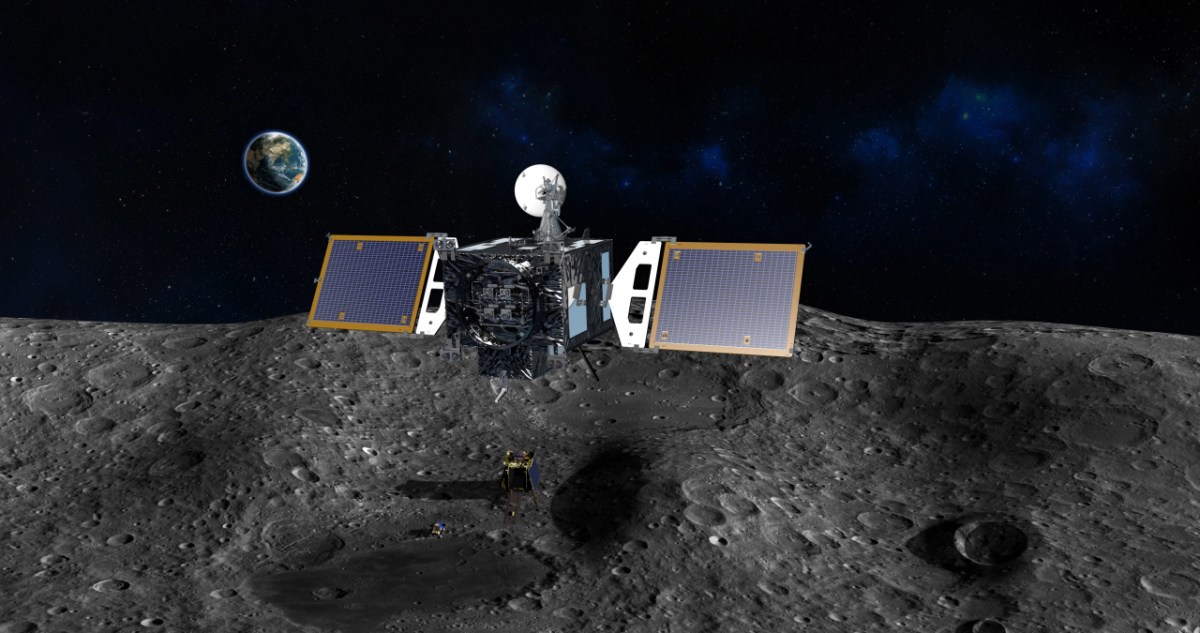Updated 9:50 p.m. Eastern to clarify spacecraft involved in conjunction warnings.
TOKYO — Even a few spacecraft in orbit around the moon can create dozens of warnings of potential collisions and require several maneuvers, suggesting the need for more robust coordination mechanisms.
In a presentation at the Secure World Foundation’s Summit for Space Sustainability here July 11, Soyoung Chung, senior researcher at the Korea Aerospace Research Institute’s (KARI’s) strategy and planning directorate, said her agency had received 40 “red alarms” of potential collisions among spacecraft orbiting the moon in the last 18 months.
The warnings primarily involve close approaches involving KARI’s Korea Pathfinder Lunar Orbiter (KPLO), NASA’s Lunar Reconnaissance Orbiter (LRO) and the Chandrayaan-2 orbiter from India’s space agency ISRO, which are all in similar low orbits around the moon. The three agencies voluntarily share information about the orbits of their spacecraft using a NASA platform called MADCAP that generates collision warnings.
Since KPLO entered orbit around the moon in December 2022, that system has generated 40 warnings, called red alarms, of potential conjunctions. Some are “naturally resolved,” she said, as improved orbital data shows no risk of a collision. Others can be handed by having one of the spacecraft perform a routine maneuver to maintain its orbit.
“But for some of them, you need to have a specific maneuver just to avoid this potential collision,” she said. KPLO has performed three such maneuvers so far, one to avoid a close approach to LRO, another to avoid Chandrayaan-2 and a third to avoid Japan’s Smart Lander for Investigating Moon (SLIM) spacecraft shortly before its January landing. The SLIM conjunction, she noted, required a decision on the maneuver within a day to avoid conflicting with its landing.
Collision avoidance maneuvers around the moon are not unprecedented. In 2021, Chandrayaan-2 maneuvered to avoid a close approach to LRO after coordination between ISRO and NASA. At the time, neither agency disclosed the frequency of those potential conjunctions.
The magnitude of potential collisions among spacecraft in lunar orbit now, though, has not been widely discussed publicly. “This is something real that we haven’t discussed much,” Chung said.
The issue, she noted, highlights the lack of formal processes and procedures for coordinating spacecraft around the moon, a problem that will only grow worse as more companies and countries send missions there.
“Right now, there’s no mutually agreed-upon international consultation mechanism or protocol to resolve such collision risks,” she said. The coordination among ISRO, KARI and NASA is a voluntary system that others, like China, have not participated in. “Not all actors are involved in this process.”
There is also no formal mechanism for determining which spacecraft performs a collision avoidance maneuver if required. Such maneuvers can disrupt spacecraft operations as well as consume fuel that reduces the spacecraft’s lifetime. She said later that KARI agreed to perform those three KPLO maneuvers because it had more fuel available.
“With our experience of operating KPLO, we realize there is a need for an information-sharing platform and mutually agreed-upon international protocols to identify and manage the risk of collisions between the missions around the moon just like we do on the Earth,” she said.
One mechanism for doing so may be through the United Nations Committee on the Peaceful Uses of Outer Space (COPUOS). The committee agreed at its meeting last month to establish an Action Team on Lunar Activities Consultation, based on a proposal from the Republic of Korea and Romania. Chung said coordination mechanisms for lunar spacecraft will be one of the topic the action team will consider.
